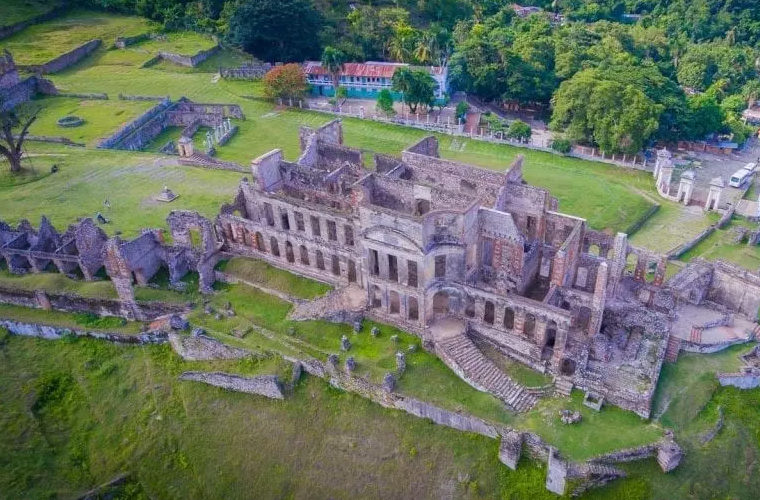The Sans-Souci Palace, located in the town of Milot in northern Haiti, holds a significant place in history as a symbol of the country’s revolutionary era. Built to serve as a residence for the revolutionary leader Henri Christophe, the palace stands as a testament to his vision and ambition. Christophe, who would later become king in 1811, initiated the construction of the palace in 1810, and it quickly became one of the most lavish and impressive structures of its time.
The construction of the Sans-Souci Palace was a reflection of Christophe’s desire to establish a grand and imposing seat of power. The palace was just one of many ambitious projects that Christophe undertook during his rule, which also included the construction of the nearby Citadelle Laferrière. These monumental structures were intended to solidify Christophe’s authority and leave a lasting legacy that would be remembered for generations to come.
The architectural style of the Sans-Souci Palace is a striking blend of European neoclassical design and traditional Caribbean influences. The grandeur of the palace’s exterior is evident in its imposing facade, adorned with ornate detailing and decorative elements that exude a sense of regal opulence. The interior spaces are equally impressive, with spacious rooms and elegant furnishings that reflect the palace’s intended role as a residence fit for a monarch.
In addition to its architectural significance, the Sans-Souci Palace holds immense historical importance as a site that embodies the spirit of Haiti’s struggle for independence. As the residence of Henri Christophe, who played a pivotal role in leading the country to freedom from colonial rule, the palace stands as a tangible link to this transformative period in Haitian history. Its construction symbolizes the aspirations of a newly independent nation seeking to assert its identity and establish its place on the world stage.









Despite its historical and cultural significance, the Sans-Souci Palace has faced considerable challenges over the years. The passage of time, natural disasters, and political instability have taken their toll on the structure, leading to significant deterioration and damage. Efforts to preserve and restore the palace have been ongoing, with various initiatives aimed at safeguarding this important heritage site for future generations.
Today, the Sans-Souci Palace continues to attract visitors from around the world who are drawn to its compelling history and architectural beauty. As a designated UNESCO World Heritage Site, the palace holds a special place in global heritage, serving as a reminder of Haiti’s rich cultural legacy and its enduring resilience in the face of adversity.
In conclusion, the Sans-Souci Palace stands as a testament to the vision and ambition of Henri Christophe, as well as a symbol of Haiti’s struggle for independence and its cultural heritage. Despite the challenges it has faced, the palace remains an enduring symbol of national pride and a living connection to Haiti’s past. Its preservation and continued recognition as a site of global significance are essential in ensuring that its legacy endures for future generations to appreciate and learn from.

